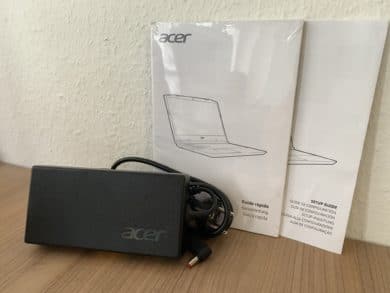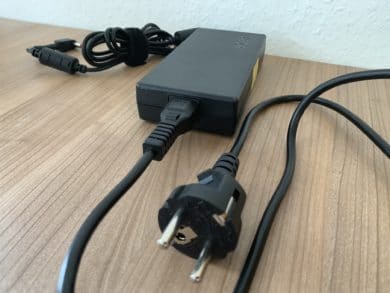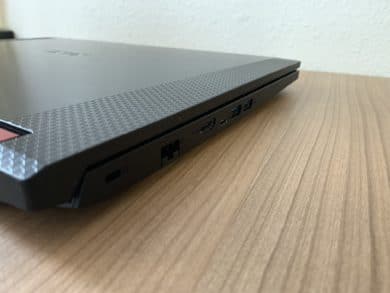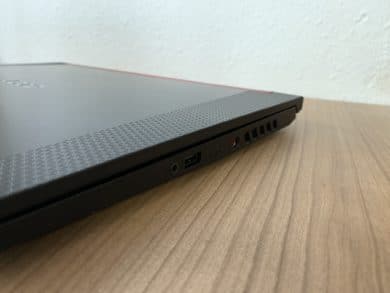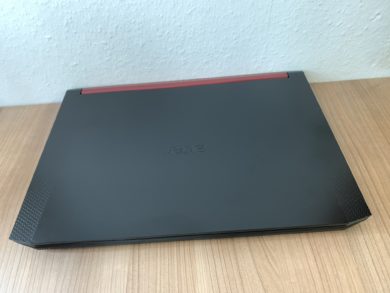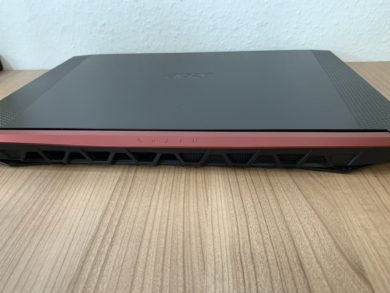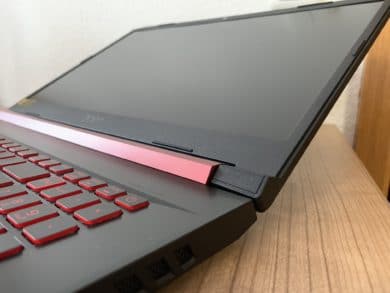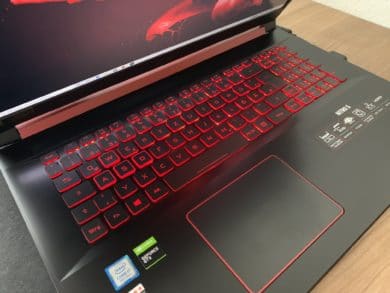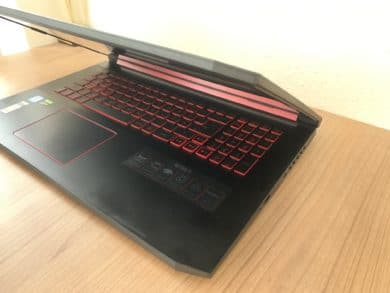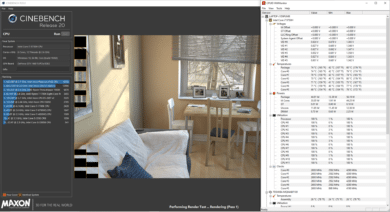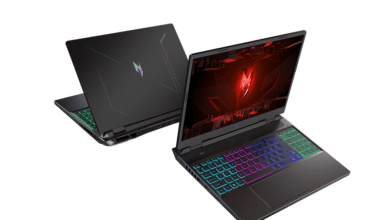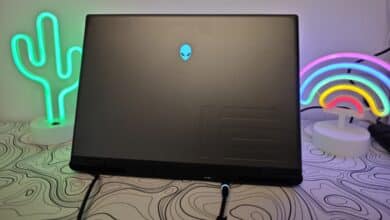
Notebook-sized gaming? While people used to smile at you for such a device, the market now offers many good devices. Performance hardly lags behind average desktop PCs anymore. The biggest disadvantage is usually only the price.
With the Nitro 5, Acer wants to bring a less expensive model with good performance onto the desktop of a gamers. We got a Nitro 5 with a 17 inch display, a Nvidia 1660 Ti and an Intel hex core from Acer for a test and are curious how the gaming notebook will perform in our test!
Packaging and Accessories
The Nitro 5, with the full name AN517-51-7887, arrives in a well padded package.
The included accessories correspond to the absolute minimum: In addition to the notebook, only a 180 watt power supply as well as a setup and short instructions manual are included.
Other accessories such as a bag, sticker or additional cables are not included.

Equipment and Software
Our Nitro 5 offers some connections. In addition to the proprietary power connector, a 3.5 mm jack and USB 2.0 port are located on the right. On the left are two USB 3.0 Type A and one USB 3.0 Type C connectors. There is also an HDMI and a 1GB RJ45 LAN port. There is also a Kensington lock on the edge.
The notebook tested here has an Intel Core i7-9750H, two 8 GB DDR4-2400 memories (16 GB in total), a 1 TB HDD, a 512 GB M.2 PCIe SSD and a NVIDIA GeForce GTX 1660 Ti (Mobile) with 6 GB GDDR6. All hardware is housed in a 2.7kg 17-inch chassis with a 60Hz full HD IPS monitor and 0.9 megapixel webcam. The built-in hardware is thus also dimensioned for compute-intensive tasks.
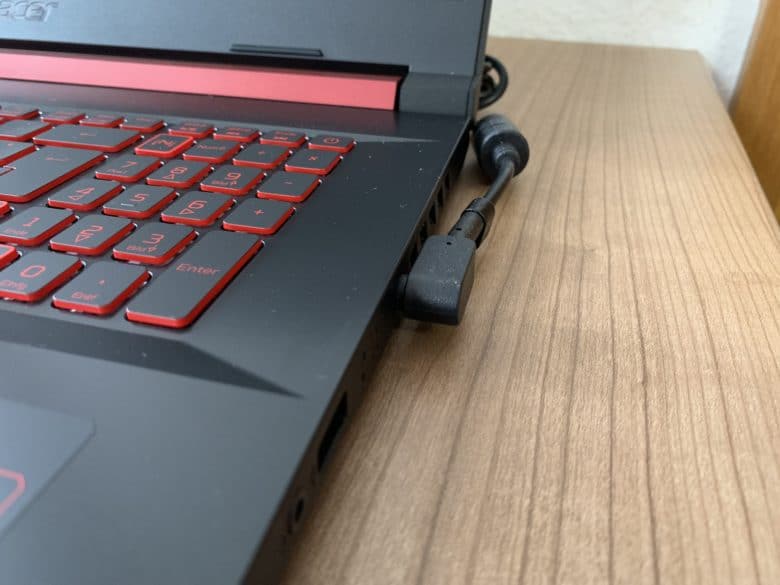
The pre-installed Windows 10 version largely dispenses with additional software. In addition to a few Acer-specific applications, an additional antivirus program is installed in advance.
Design and Workmanship
The almost 26 mm thin Nitro 5 is mainly made of plastic, but it is well processed – there are no faults to be found. The torsional stiffness is at an average level. With approx. 2.7 kg the Nitro 5 has a normal weight in the 17 inch class.
On the underside and on the back there are large ventilation slits. This is also necessary for the installed hardware. Acer uses black and red colors.
The hinge of the Nitro 5 allows a relatively large angle. Here, too, the impression from the outside continues: the workmanship is good, the torsional stiffness is good.
The keyboard of the Nitro 5 fills up pleasantly and looks appealing. Typical for 17-inch notebooks, a Numpad is integrated. If needed, a brightness adjustable illumination can be activated, which goes out after a few seconds when not in use.
The touchpad is placed under the space bar. Unfortunately, this is relatively small and average in operation. The touchpad doesn’t come close to the size and feeling of a MacBook.
Overall, Nitro 5 looks chic, but not special. Optically, the notebook should appeal primarily to PC gamers.
Overall, the processing of our Nitro 5 is at a good level. The keyboard and touchpad are average and the torsional stiffness is fine.
Display
The notebook’s 17.3-inch full HD display is matt and has a relatively good viewing angle stability due to the IPS panel. The colors look okay and there are no pixel errors or problems with the illumination.
However, the display only delivers a maximum of 60 Hz. Unfortunately there is no option to 120 Hz or more for other 17 inch models of the Nitro 5 series.
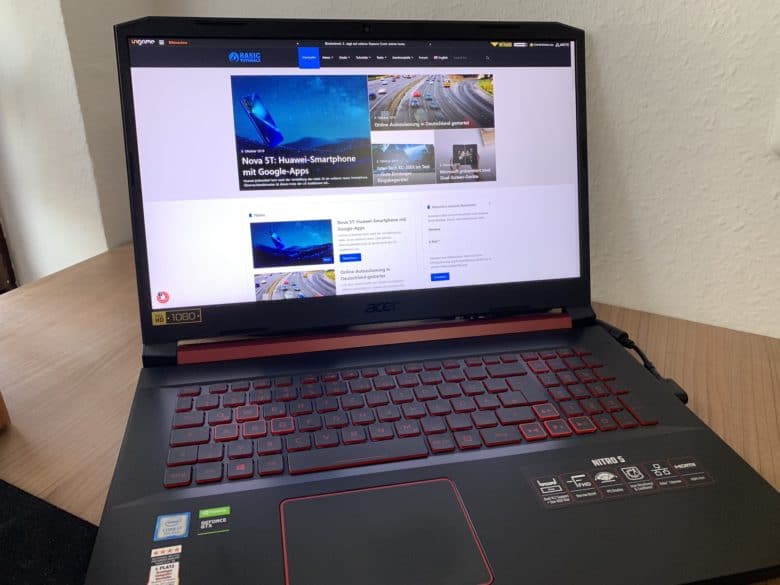
Looking at the notebook’s intended use, the maximum brightness of the display is fine for indoor use. However, the brightness is not sufficient when the display is exposed to direct sunlight.
Performance: Practical Test
The Nitro 5 has more than enough power for everyday tasks. But how does the notebook actually perform under higher load? How high does the CPU clock under continuous load and what do the temperatures look like? To find out all this in our test, we use Cinebench R20 and a benchmark in the game CS:GO.
In both cases, we run the tests three times in a row to find out the actual performance under continuous load. In CS:GO, the maximum settings were selected at Full HD.
Overview of the CPU/GPU Test Results
| First run | Second run | Third run | |
|---|---|---|---|
| Cinebench R20 | 2160 (2.7 – 2.8 GHz) | 2179 (2.7 – 2.8 GHz) | 2167 (2.7 – 2.8 GHz) |
| CS:GO | 178.28 FPS | 168.11 FPS | 166.10 FPS (2.6 – 3.4 GHz) |
During the test under Cinebench R20, one thing is directly noticeable: The result remains the same even if the test is carried out several times. The cooling system can dissipate the average 45 watts of the Intel CPU without any problems. The CPU clocks an average of 2.75 GHz at 70-75°C – slightly above the base clock of 2.6 GHz – and at good temperatures. If the CPU were allowed to consume more than 45 watts permanently, there would certainly be room for permanently higher clock rates.
If the GPU is also required in addition to the CPU, then in our test with CS:GO a performance loss of approx. 7% can be measured in comparison to the first run in the third run. The CPU temperature is again 70-75°C, but here it clocks between 2.6 and 3.4 GHz. The GPU quickly reaches 80°C and maintains this temperature.
SSD Test
Finally, the performance of the SSD must be assessed. The AS SSD benchmark is used for this purpose.
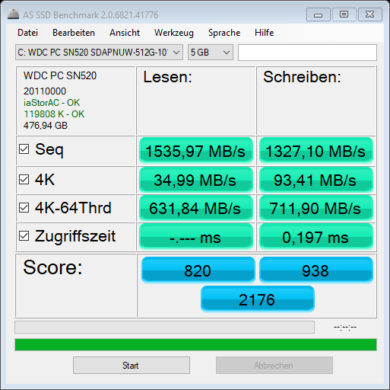
The SSD test immediately shows that Acer does not rely on a SATA SSD. With read rates of approx. 1500 MB/s, the Western Digital SSD used is up to three times faster.
Overall, the performance of the built-in WD SSD can be described as good. Compared to other SSDs, the speed is between a SATA and a fast M.2 SSD.
Battery Life and Noise Level
In order to determine the battery life, the Nitro was used with approx. 50% screen brightness in everyday tasks. After about 5 hours the laptop had to be recharged. Although the advertised 7 hours are not reached, this device class is an average value.
During the test with Cinebench, the fans are continuously active and audible, but not disturbing. In comparison, the fans are one level louder in the gaming test. However, the background noise is quite pleasant, as there is no rattling or other background noise to be heard. At low loads, such as surfing or watching video, the notebook is often not audible. The fans sometimes get a bit faster for a short time, but still work quietly and not disturbingly.
Expandability
Maintenance flaps are a rarity on notebooks these days. With the Nitro 5, however, the complete underside can be removed without any problems. With a small screwdriver 12 screws have to be loosened.

The inner life reveals a well maintainable inner life. Battery, HDD, SSD and RAM can be easily removed or replaced. The two free M.2 slots also stand out positively.
Conclusion of the Acer Nitro 5 AN517-51 Review
The Acer Nitro 5 AN517-51-7887 tested here is a solid gaming notebook. The workmanship is good, the keyboard and touchpad are fine. The battery life is average and the volume is within limits. But the performance is consistently high and well placed for the called price of € 47.58 *. Alternatives are hard to come by without a clear indication.
At the end of the test one thing is certain: With the Nitro 5 AN517-51-7887 you get a good gaming notebook with 17 inches and good performance. If you can do without a 144 Hz screen and live with the mentioned weaknesses, you should take a closer look at Acer’s Nitro 5.
Acer Nitro 5 AN517-51-7887
Design & Workmanship
Display
Features & Software
Performance
Battery
Noise Level
Value for Money
A solid and fast gaming notebook!



